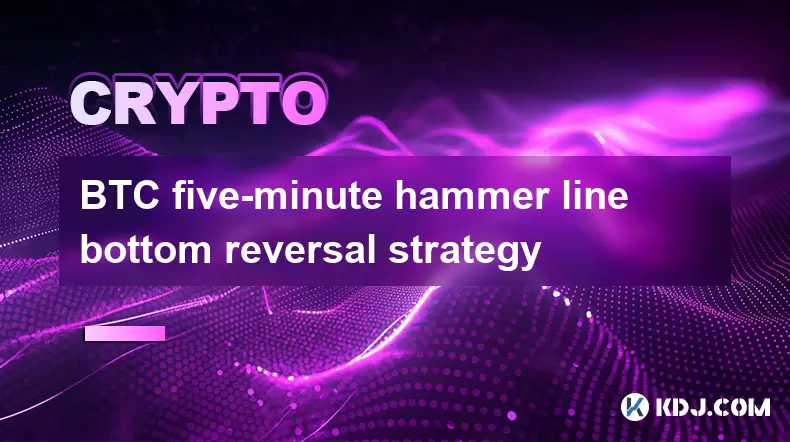-
 Bitcoin
Bitcoin $116800
0.06% -
 Ethereum
Ethereum $3916
2.20% -
 XRP
XRP $3.333
8.10% -
 Tether USDt
Tether USDt $1.000
0.02% -
 BNB
BNB $789.3
1.45% -
 Solana
Solana $177.6
2.58% -
 USDC
USDC $0.0000
0.02% -
 Dogecoin
Dogecoin $0.2232
4.03% -
 TRON
TRON $0.3384
0.01% -
 Cardano
Cardano $0.8005
4.26% -
 Stellar
Stellar $0.4651
11.58% -
 Hyperliquid
Hyperliquid $41.38
5.34% -
 Sui
Sui $3.828
2.87% -
 Chainlink
Chainlink $19.41
11.81% -
 Bitcoin Cash
Bitcoin Cash $581.4
0.02% -
 Hedera
Hedera $0.2623
3.12% -
 Avalanche
Avalanche $23.50
3.00% -
 Ethena USDe
Ethena USDe $1.001
-0.04% -
 Litecoin
Litecoin $121.8
0.85% -
 UNUS SED LEO
UNUS SED LEO $8.986
0.38% -
 Toncoin
Toncoin $3.359
1.47% -
 Shiba Inu
Shiba Inu $0.00001293
2.14% -
 Uniswap
Uniswap $10.61
4.95% -
 Polkadot
Polkadot $3.917
3.45% -
 Dai
Dai $1.000
-0.01% -
 Bitget Token
Bitget Token $4.461
1.26% -
 Cronos
Cronos $0.1516
2.47% -
 Monero
Monero $265.7
-5.07% -
 Pepe
Pepe $0.00001118
2.72% -
 Aave
Aave $283.4
3.76%
BTC five-minute hammer line bottom reversal strategy
The BTC five-minute hammer line strategy uses a bullish reversal pattern to identify short-term price reversals, guiding traders on optimal entry and exit points.
May 31, 2025 at 12:01 pm

Introduction to the BTC Five-Minute Hammer Line Bottom Reversal Strategy
The BTC five-minute hammer line bottom reversal strategy is a popular approach among cryptocurrency traders looking to capitalize on short-term price movements. This strategy focuses on identifying potential reversals in the price of Bitcoin (BTC) using the five-minute candlestick chart. The hammer line, a specific type of candlestick pattern, is used as the primary indicator for this strategy. By understanding and applying this technique, traders can make informed decisions about entering and exiting trades at optimal times.
Understanding the Hammer Line Candlestick Pattern
The hammer line is a bullish reversal candlestick pattern that typically appears at the bottom of a downtrend. It is characterized by a small body at the top of the candlestick and a long lower wick, which is at least twice the length of the body. The pattern suggests that after a period of selling, buyers have stepped in and pushed the price back up, potentially signaling a reversal. For the BTC five-minute hammer line bottom reversal strategy, traders focus on hammer lines that appear on the five-minute chart, as these can indicate short-term reversals.
Identifying a Valid Hammer Line on the Five-Minute Chart
To effectively use the BTC five-minute hammer line bottom reversal strategy, traders must be able to identify valid hammer lines on the five-minute chart. Here are the key steps to follow:
- Observe the Downtrend: Before a hammer line can be considered valid, there should be a clear downtrend in the price of BTC. This can be confirmed by observing a series of lower highs and lower lows on the five-minute chart.
- Look for the Hammer Line: Once a downtrend is established, scan the chart for a candlestick that meets the criteria of a hammer line. The body should be small and located at the top of the candlestick, with a long lower wick.
- Confirm the Wick Length: The lower wick should be at least twice the length of the body to be considered a valid hammer line. This indicates strong buying pressure after a period of selling.
- Check for Confirmation: After identifying a potential hammer line, wait for the next candlestick to confirm the reversal. A bullish candlestick closing above the hammer line's body can serve as confirmation.
Entry and Exit Points for the Strategy
Once a valid hammer line is identified and confirmed, traders can use the following guidelines to determine entry and exit points for their trades:
- Entry Point: Enter a long position as soon as the candlestick following the hammer line closes above the hammer line's body. This indicates that the reversal is likely to continue, and it is a good time to buy BTC.
- Stop Loss: To manage risk, set a stop loss order just below the lowest point of the hammer line's wick. This ensures that if the reversal fails, losses are minimized.
- Take Profit: Determine a take profit level based on the recent price action. A common approach is to aim for a target that is at least equal to the height of the hammer line, measured from the entry point. Alternatively, traders can use technical indicators such as moving averages or support/resistance levels to set their take profit.
Practical Example of the BTC Five-Minute Hammer Line Bottom Reversal Strategy
To illustrate how the BTC five-minute hammer line bottom reversal strategy works in practice, consider the following example:
- Identify the Downtrend: On the five-minute chart, BTC is in a clear downtrend, with prices making lower highs and lower lows.
- Spot the Hammer Line: A candlestick appears with a small body at the top and a long lower wick, meeting the criteria of a hammer line.
- Confirm the Reversal: The next candlestick closes above the body of the hammer line, confirming the potential reversal.
- Enter the Trade: A long position is entered as soon as the confirming candlestick closes.
- Set Stop Loss: A stop loss order is placed just below the lowest point of the hammer line's wick to manage risk.
- Set Take Profit: The take profit level is set at a target that is equal to the height of the hammer line, measured from the entry point.
Risk Management and Considerations
While the BTC five-minute hammer line bottom reversal strategy can be effective, it is important for traders to practice proper risk management. Here are some key considerations:
- Position Sizing: Never risk more than a small percentage of your trading capital on any single trade. A common rule of thumb is to risk no more than 1-2% of your total capital.
- Diversification: Do not rely solely on the hammer line strategy. Use it in conjunction with other technical indicators and strategies to improve your overall trading performance.
- Market Conditions: Be aware of the broader market conditions and sentiment. The hammer line strategy may be more effective in certain market environments, such as during periods of high volatility.
- Backtesting: Before using the strategy with real money, backtest it on historical data to understand its effectiveness and potential pitfalls.
Frequently Asked Questions
Q: Can the BTC five-minute hammer line bottom reversal strategy be used for other cryptocurrencies?
A: Yes, the hammer line strategy can be applied to other cryptocurrencies as well. However, it is important to consider the liquidity and volatility of the specific cryptocurrency, as these factors can affect the reliability of the strategy.
Q: How often should I check the five-minute chart for potential hammer lines?
A: The frequency of checking the chart depends on your trading style and availability. For active traders, monitoring the chart every few minutes can be beneficial. For those with less time, checking the chart at regular intervals, such as every 15-30 minutes, can still be effective.
Q: Are there any other candlestick patterns that can be used in conjunction with the hammer line strategy?
A: Yes, other bullish reversal patterns, such as the morning star or the bullish engulfing pattern, can be used alongside the hammer line to increase the probability of a successful trade. Combining multiple patterns and indicators can provide stronger signals for entering and exiting trades.
Q: How can I improve my skills in identifying hammer lines on the five-minute chart?
A: Practice is key to improving your skills. Spend time analyzing historical charts and identifying hammer lines in different market conditions. Additionally, using trading simulators or demo accounts can help you gain experience without risking real money.
Disclaimer:info@kdj.com
The information provided is not trading advice. kdj.com does not assume any responsibility for any investments made based on the information provided in this article. Cryptocurrencies are highly volatile and it is highly recommended that you invest with caution after thorough research!
If you believe that the content used on this website infringes your copyright, please contact us immediately (info@kdj.com) and we will delete it promptly.
- BlockchainFX: The Crypto Presale Investors Can't Ignore
- 2025-08-08 19:10:12
- Pump.fun, Memecoins, Glass Full: Solana's Launchpad Wars Heat Up!
- 2025-08-08 18:50:12
- Crypto Market Heats Up: Altcoin Spree Drives Market Cap to $3.87T
- 2025-08-08 19:05:02
- Cardano (ADA) Price Gears Up: Open Interest Surges Amidst Key Resistance Retest
- 2025-08-08 19:15:42
- Bitcoin, Meme ICOs, and FOMO: Catching the Next Crypto Wave
- 2025-08-08 18:30:34
- OM, Investment, and Growth: Decoding the Latest Trends in Digital Assets
- 2025-08-08 18:30:34
Related knowledge

Can the Bitcoin protocol be changed?
Aug 07,2025 at 01:16pm
Understanding the Bitcoin ProtocolThe Bitcoin protocol is the foundational set of rules that govern how the Bitcoin network operates. It defines every...

How are Bitcoin transactions verified?
Aug 08,2025 at 06:57am
Understanding Bitcoin Transaction VerificationBitcoin transactions are verified through a decentralized network of nodes and miners that ensure the le...

How does decentralization make Bitcoin secure?
Aug 08,2025 at 09:35am
Understanding Decentralization in BitcoinDecentralization is a foundational principle of Bitcoin's architecture and plays a critical role in its secur...

What are some common misconceptions about Bitcoin?
Aug 07,2025 at 07:22pm
Bitcoin is Just Like Regular MoneyA widespread misconception is that Bitcoin functions identically to traditional fiat currencies like the US dollar o...

What is the role of nodes in the Bitcoin network?
Aug 08,2025 at 04:14pm
Understanding the Function of Nodes in the Bitcoin NetworkNodes are fundamental components of the Bitcoin network, serving as the backbone that ensure...

Is Bitcoin a solution for inflation?
Aug 08,2025 at 04:57am
Understanding Inflation and Its Impact on Traditional CurrenciesInflation refers to the sustained increase in the price of goods and services over tim...

Can the Bitcoin protocol be changed?
Aug 07,2025 at 01:16pm
Understanding the Bitcoin ProtocolThe Bitcoin protocol is the foundational set of rules that govern how the Bitcoin network operates. It defines every...

How are Bitcoin transactions verified?
Aug 08,2025 at 06:57am
Understanding Bitcoin Transaction VerificationBitcoin transactions are verified through a decentralized network of nodes and miners that ensure the le...

How does decentralization make Bitcoin secure?
Aug 08,2025 at 09:35am
Understanding Decentralization in BitcoinDecentralization is a foundational principle of Bitcoin's architecture and plays a critical role in its secur...

What are some common misconceptions about Bitcoin?
Aug 07,2025 at 07:22pm
Bitcoin is Just Like Regular MoneyA widespread misconception is that Bitcoin functions identically to traditional fiat currencies like the US dollar o...

What is the role of nodes in the Bitcoin network?
Aug 08,2025 at 04:14pm
Understanding the Function of Nodes in the Bitcoin NetworkNodes are fundamental components of the Bitcoin network, serving as the backbone that ensure...

Is Bitcoin a solution for inflation?
Aug 08,2025 at 04:57am
Understanding Inflation and Its Impact on Traditional CurrenciesInflation refers to the sustained increase in the price of goods and services over tim...
See all articles

























































































